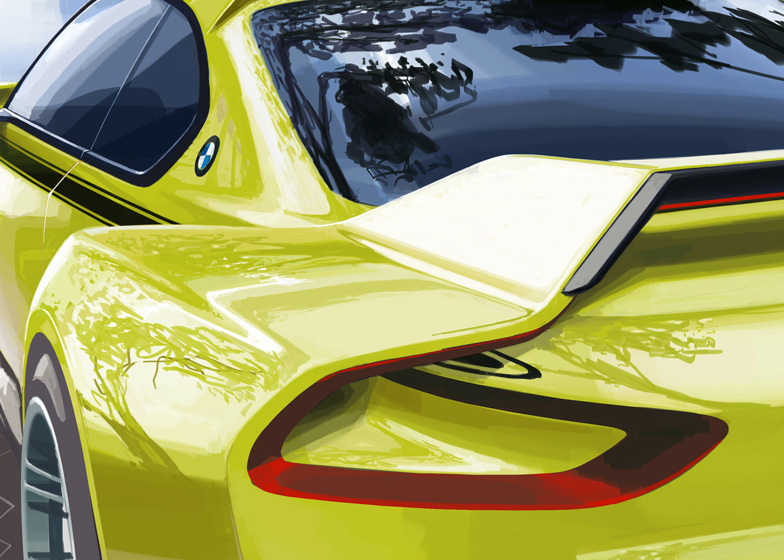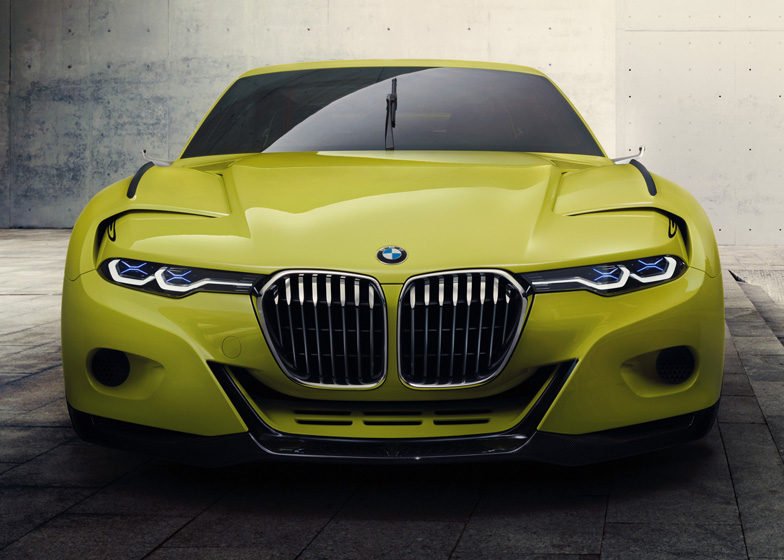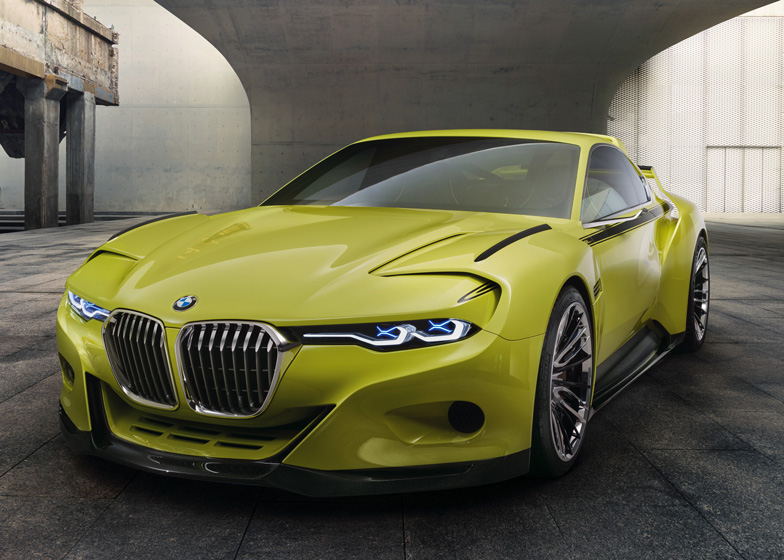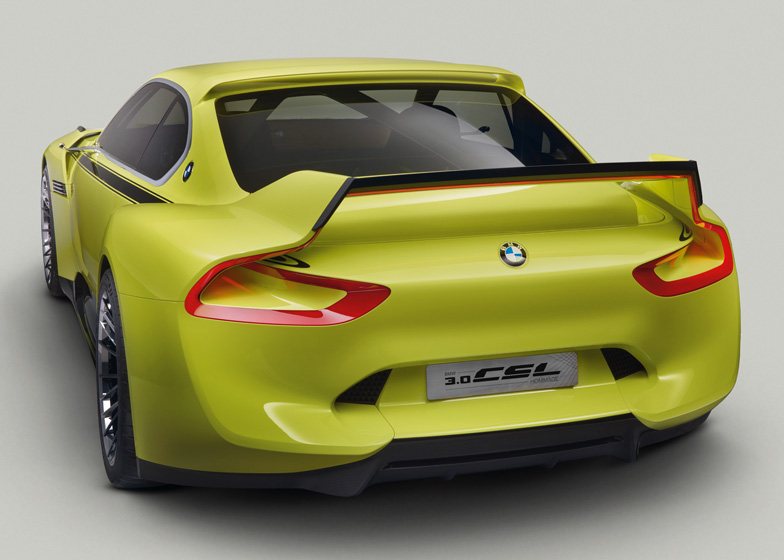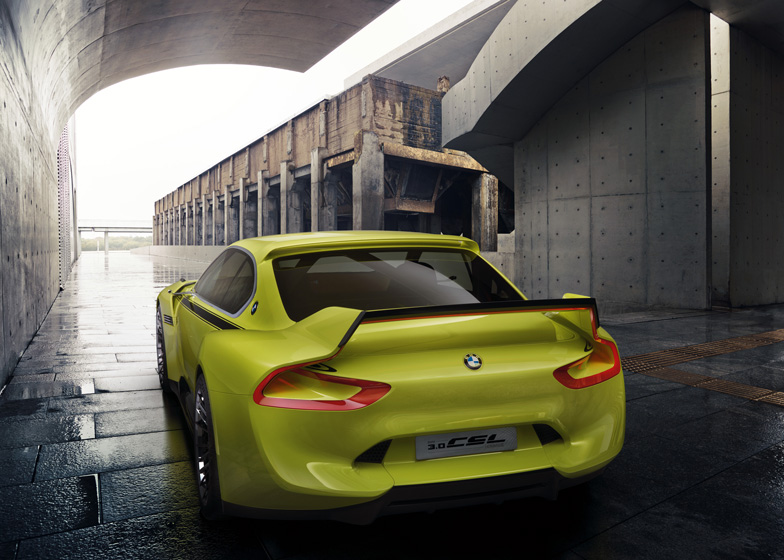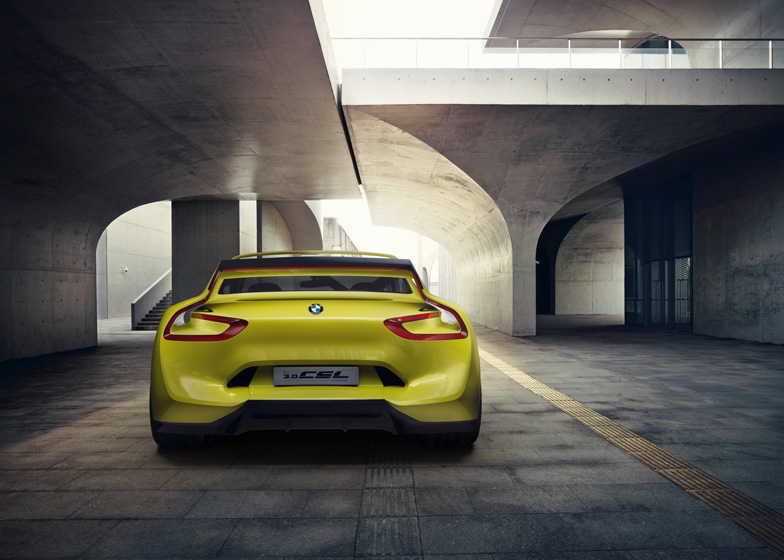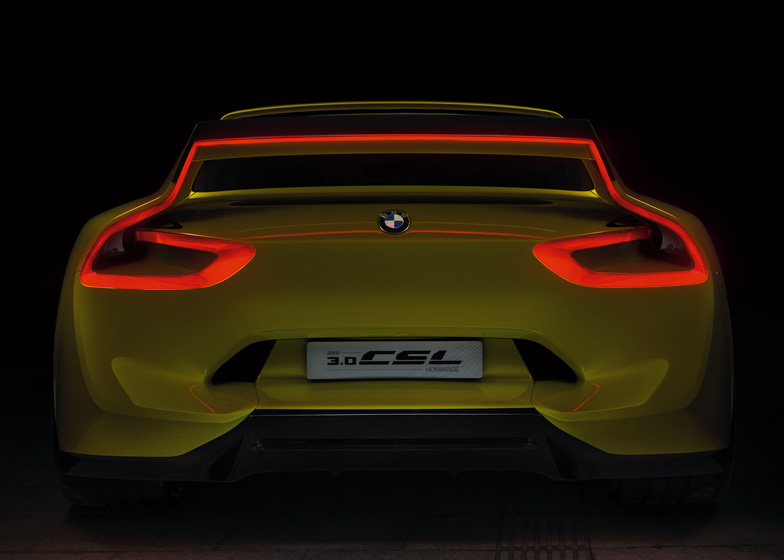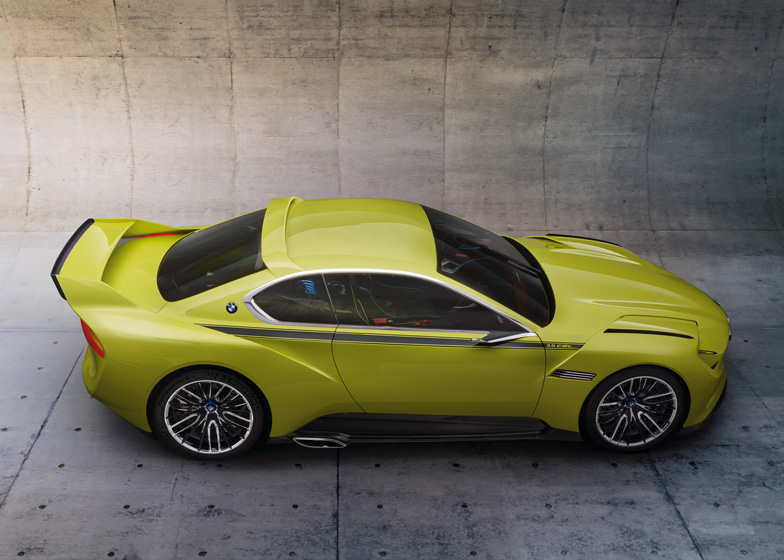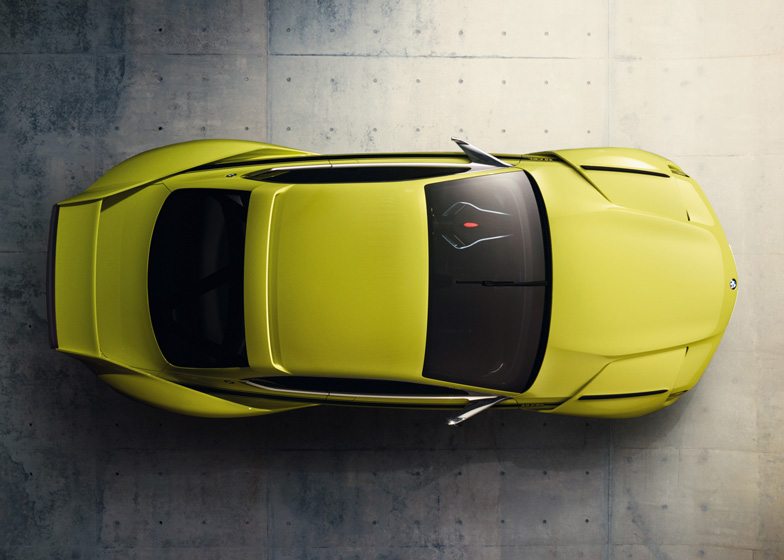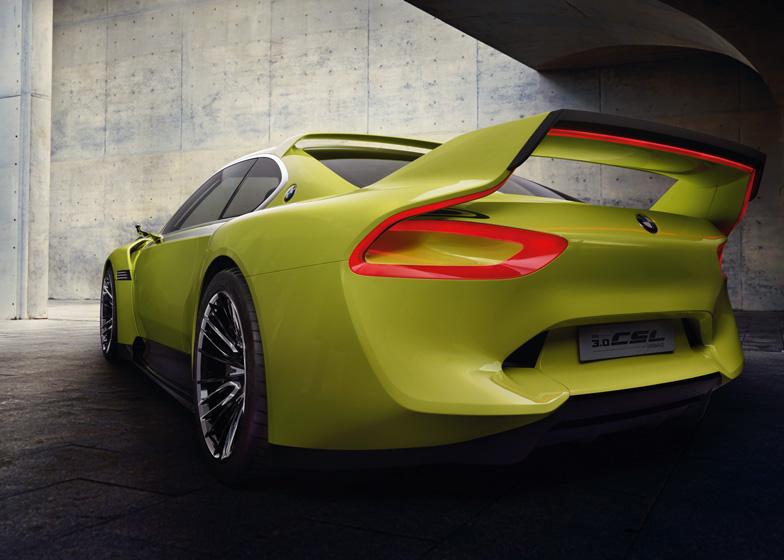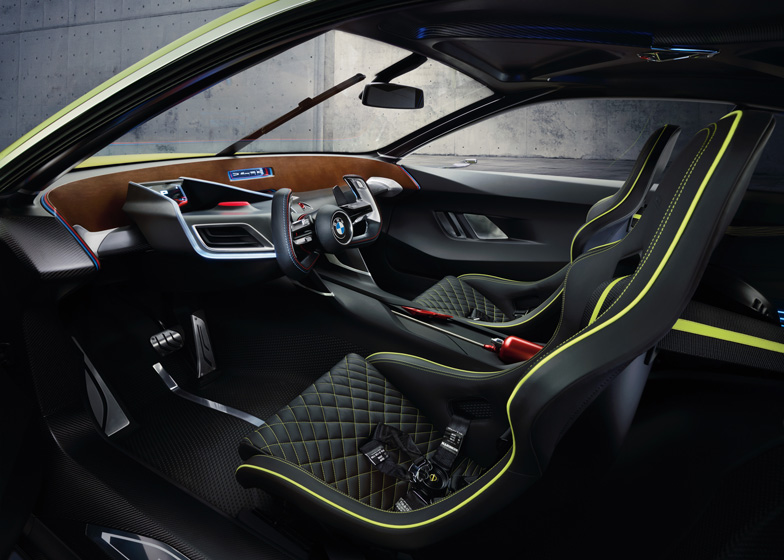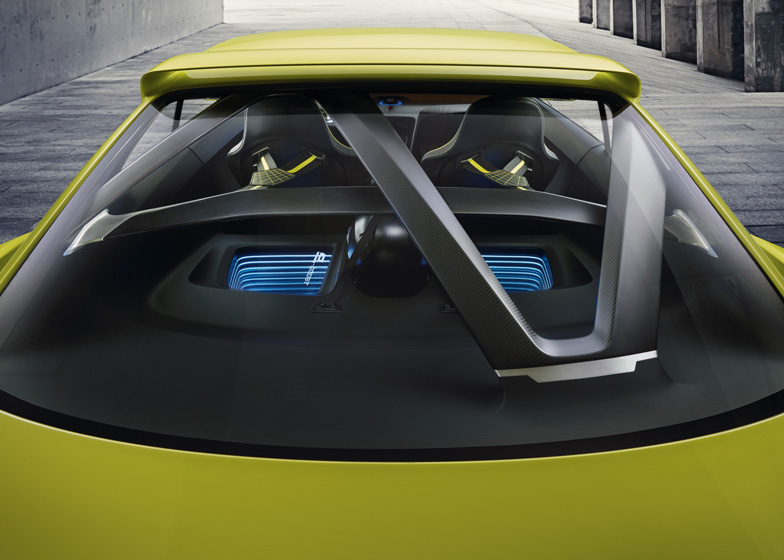German automotive brand BMW has unveiled a concept car with an entirely carbon-fibre chassis and rear lights that look as if they have been drawn "like calligraphy" (+ slideshow).
The 3.0 CSL Hommage launched at the Concorso d'Eleganza vintage car show at Italy's Lake Como this weekend.
As its name suggests, the design is a reinterpretation of BMW's 1972 3.0 CSL model – part of the company's E9 family of cars.
BMW's head of design Karim Habib told Dezeen that the primary aim while creating the concept racing car was to reduce the vehicle's weight.
"CSL stands for coupé, sport, lightweight," he said. "Lightweight is the most important thing about this car."
BMW chose carbon fibre to form the chassis and the majority of the interior components, including the dashboard and the racing-style seats.
Using this material allowed the team to create sculptural gestures across the bodywork, particularly over the rear wheels where the material curves up into the rear spoiler with a gap in between.
"Everything in this car is carbon fibre, both the exterior and the interior," Habib said. "Carbon fibre allows shapes and forms and undercuts and edges that you wouldn't be able to do in steel or aluminium. That's a big part of why the car looks the way it does."
Although the prototype car hasn't officially been weighed, Habib suspects that it measures a third of the weight than if it had been made from steel or aluminium.
Features carried over from the original design include two spoilers: one on the rear and another at the back of the roof.
The same triple-stripe graphic runs below the side windows, but now finishes with curved ends at the back.
The original rectangular wing mirrors, which drastically affect the vehicle's aerodynamics according to Habib, have been replaced with slender fins that carry small cameras.
"Aerodynamically, the mirrors make the car less efficient," said Habib. "Removing the mirrors lowers the drag coefficient by about 10 points – which is quite a lot."
One of the most dramatic design features are the rear lights, which begin as thick lines and spiral out to run up and over the back of the spoiler as a thin strip.
"These lights are done almost like with a paintbrush, like calligraphy from the thin to thick," Habib said. "It has a poetry aspect."
The headlights incorporate lasers that form X shapes when illuminated and a single wiper rests vertically on the windscreen.
The interior has been pared down to the bare minimum to include just two small screens mounted in the otherwise empty dashboard and a small steering wheel.
As well as the material developments, Habib's team has also been looking into using Google Glass-like technology to present data on a racing driver's visor – preventing the need to glance at the dashboard.
"The other thing we're playing around with is projecting information onto a driver's helmet visor," Habib said. "I think that's probably quite close."
This year's Concorso d'Eleganza took place at Villa d'Este in Cernobbio from 22 to 24 May.

